Results 10,461 to 10,470 of 12094
Thread: Anandtech News
-
03-26-20, 07:19 PM #10461
Anandtech: Plugable Launches Low-Cost 2.5 GbE USB Dongle: $30 for a Limited Time
Plugable this week has become the latest peripheral manufacturer to start producing 2.5 Gigabit Ethernet dongles, with the release of their own adapter. Designed to add support for faster networking speeds to PCs with USB 3.0 Type-A and Type-C ports, Plugable is pushing the "inexpensive" aspect of the network adapter hard, launching it at just $30.
Like most other 2.5GbE adapters we've seen to date, the Plugable 2.5G USB Ethernet Adapter (USBC-E2500) is based on Realtek's RTL8156 controller, which supports 2.5GBASE-T and on down, all over standard Cat5e cabling. The Realtek chip supports such features as 9k Jumbo frame support, auto MDI-X (crossover detection and correction), and IEEE 802.1Q VLAN. Since some of these capabilities require OS support, the dongle comes with drivers for Apple MacOS (10.12 and newer), Microsoft Windows 7/8/10, and Linux (kernel 3.2).
Meanwhile, recognizing that the industry as a whole is in the middle of a transition from USB Type-A to USB Type-C, the USB-C native Plugable 2.5G USB Ethernet Adapter comes with a USB-C to USB-A adapter that's conveniently tethered to the dongle's cable. For USB dongles that even bother to account for both port types, we normally see loosely packed adapters, so this is an interesting choice that should make the adapter a lot harder to lose. Otherwise, the device is made of plastic and looks fairly small, so it should be lightweight and plenty easy to carry around.
The Plugable 2.5G USB Ethernet Adapter is now available directly from the company as well as from leading retailers. The official MSRP of the device is $39.99, but for a limited time the product will be available for $29.99 from Amazon with code 25ETHERNET. The adapter is being released in the US, UK, EU, Australia, Canada, and Japan.

With the COVID-19 outbreak and work from home initiatives being enforced around the globe, this might not be the best time to introduce 2.5G Ethernet dongles that are primarily meant for offices. None the less, we're happy to see the continued proliferation of faster Ethernet controllers and dongles – and hope that cheaper network switches will catch up soon.
Related Reading:
- Sonnet Unveils Solo5G: A USB-C to 5 GbE Network Adapter
- Club 3D Launches 2.5 GbE USB Type-A & USB Type-C Dongles
- Aquantia Multi-Gig: Single Chip USB 3.0 to 5G/2.5G Dongles Coming Soon
- AKiTiO’s Thunder3 10G Adapter Now Available: TB3-to-10GbE for Sub-$300
- EnGenius Reveals ‘Affordable’ Multi-Gig Switches with PoE: 8 2.5GBASE-T and 4 10GbE SFP+ Ports
Source: Plugable
More...
-
03-26-20, 07:19 PM #10462
Anandtech: EIZO Expands Availability of OLED Foris Nova Monitor
EIZO this week expanded the availability of its 21.6-inch 4K OLED Foris Nova display. The display was originally launched back in October as a limited-edition product for the Japanese market. Overall, just 500 units were to be made from that production run. However it would seem that EIZO has modified their plans since then, as according to a press release issued by EIZO China, the Foris Nova is now available globally.
The EIZO Foris Nova uses a 21.6-inch printed OLED panel with a 3840×2160 resolution. The display offers a typical/peak brightness range of 132 - 330 nits, a contrast ratio of 1,000,000:1, and a black-white-black response time of 0.04 ms. The monitor can display 1.07 billion colors, covers 80% of the BT.2020 color space and supports the HDR10 and HLG HDR formats. As for connectivity, the Foris Nova connects to hosts using two HDMI 2.0 inputs, it also has 1 W stereo speakers, one headphone output, and one line out.
EIZO is officially positioning the Foris Nova as a personal entertainment display, though its support for HLG and BT.2020 color gamut makes it handy in professional use cases as well.
Meanwhile, the company's plans to expand the availability of the monitor are a bit odd. As previously noted, when EIZO first announced the monitor they stated they would only make 500 units; but they've yet to actually announce a change to this cap (the official EIZO website still says '500 units' to be made). None the less, the monitor is set to become available to a much larger audience, with the global launch making it available in China and beyond.
The worldwide release of EIZO’s Foris Nova monitor could be a good news for the manufacturer of its 21.6-inch printed OLED panel, JOLED (a division of Japan Display Inc., JDI). Expanded availability of the product could indicate that JOLED has started volume production of its 21.6-inch 4K printed OLED panels, which is why EIZO can now expand availability to China and other markets.EIZO Foris Nova Specifications Foris Nova Panel 21.6" OLED Native Resolution 3840 × 2160 Maximum Refresh Rate 60 Hz Response Time 0.04 ms (black-white-black) Brightness minimum: 0.0005 cd/m²
typical: 132 cd/m²
maximum: 330 cd/m²Contrast 1,000,000:1 Viewing Angles 178°/178° horizontal/vertical Pixel Pitch 0.1245 mm² Pixel Density 204 ppi Display Colors 1.07 billion Color Gamut Support DCI-P3: ?
sRGB/Rec 709: ?
Adobe RGB: ?
SMPTE C: ?
Rec2020: 80%Stand Tilt and height adjustable Inputs 2 × HDMI (2.0a? 2.0b?) PSU External Global Price & Date Q2 2019
Related Reading:
- EIZO Reveals Limited Edition 21.6-Inch Foris Mova OLED Monitor
- JOLED Starts Trial Production of Printed OLED Sheets at 5.5G Plant
- AU Optronics OLED Displays: A New Foldable + A New 17.3-Inch 4K120
- LG's New 55+ inch OLED Plant in China Opens: Over 1m+ per Year
Source: EIZO China (via Sina Tech, OLED-Info)
More...
-
03-27-20, 07:27 AM #10463
Anandtech: Micron to Launch HBM2 DRAM This Year: Finally
Bundled in their latest earnings call, Micron has revealed that later this year the company will finally introduce its first HBM DRAM for bandwidth-hungry applications. The move will enable the company to address the market for high-bandwidth devices such as flagship GPUs and network processors, which in the last five years have turned to HBM to meet their ever-growing bandwidth needs. And as the third and final of the "big three" memory manufacturers to enter the HBM market, this means that HBM2 memory will finally be available from all three companies, introducing a new wrinkle of competition into that market.
Overall, while Micron has remained on the cutting-edge of memory technologies, the company has been noticeably absent from HBM thus far. Previous efforts have instead focused on GDDR5X, as well as a different take on wide-and-slow memory with Hybrid Memory Cube (HMC). First announced back in 2011 as a joint effort with Samsung and IBM, HMC was a similar stacked DRAM type for bandwidth hungry applications, which featured a low-width bus & extremely high data rates to offer memory bandwidth that by far exceeded that of then-standard DDR3. As a competing solution to HBM, HMC did see some usage in the market, particularly in products like accelerators and supercomputers. Ultimately, however, HMC lost the battle against more widespread HBM/HBM2 and Micron folded the project in 2018 in favor of GDDR6 and HBM.
In the end, is has taken Micron around two years to develop its first HBM2 memory devices, and these will finally become available in 2020. Given the broad, financial nature of the call, Micron isn't disclosing the specifications of its first HBM2 devices at this time, though it is a safe bet that the underlying DRAM cells will be produced using the company’s 2nd or 3rd Generation 10 nm-class process technologies (1y or 1z). Meanwhile, Micron will obviously do its best to be competitive against Samsung and SK Hynix both in terms of performance and capacity.
Sanjay Mehrotra, president and chief executive officer, had the following to say:
“In FQ2, we began sampling 1Z-based DDR5 modules and are on track to introduce high-bandwidth memory in calendar 2020. We are also making good progress on our 1-alpha node.”Related Reading:
- CES 2020: Micron Begins to Sample DDR5 RDIMMs with Server Partners
- JEDEC Updates HBM2 Memory Standard To 3.2 Gbps; Samsung's Flashbolt Memory Nears Production
- Micron’s DRAM Update: More Capacity, Four More 10nm-Class Nodes, EUV, 64 GB DIMMs
- Micron: Mass Production of 16 Gb DDR4 & LPDDR4X Chips Using 1z nm Technology
- Rambus Develops HBM2E Controller & PHY: 3.2 Gbps, 1024-Bit Bus
Source: Micron
More...
-
03-27-20, 10:17 AM #10464
Anandtech: PowerColor Extends Product Warranty by Three Months Due to Coronavirus
PowerColor this week has announced that it is extending its warranties to existing customers by three months. The second manufacturer this month to extend its existing prodcut warranties, PowerColor is making the extension due to the SARS-CoV-2 Coronavirus global pandemic and all of the resulting lockdown-related restrictions on non-essential shipping.
With the novel Coronavirus affecting many daily aspects of life and industry, provisions of basic necessities are being prioritized over items classified as non-essential. With more emphasis on much of the world focused on remaining at home during these times, PowerColor has announced a three-month warranty extension program for customers whose warranties were due to expire in the next few months (March to June 2020).
The brief announcement from PowerColor doesn't specify which products would benefit from this three-month warranty extension, but it is likely to stretch across its entire product portfolio. The most notable products in PowerColor portfolio are its AMD Radeon graphics cards with aftermarket coolers. With delays on shipping likely due to the ongoing coronavirus outbreak, as well as workplace restrictions in place, this is beneficial to users currently in the process of an RMA.
The official statement from PowerColor reads:
"With the global crisis of COVID-19, we understand that these are critical times for everyone. This has impacted all aspects of our lives, and we understand that during these times, priorities are placed on more health-concerned matters. Many in the process of RMAs may find difficulty in shipping out cards for repair or service at this time, so we will be adding a 3-month extension to customers with warranties expiring between March through June 2020. PowerColor remains committed to deliver great products and services to our customers, and want to assure that we will continue to do so during these trying times.
Wishing health and safety for all The PowerColor team."
Related Reading- MSI Extends Product Warranties by Two Months Due to Coronavirus
- Computex 2020 Moved to September In Response to Coronavirus Pandemic
- Help Fight COVID-19 and Tom's Hardware: Join The Great Folding@Home Coronavirus Race
- Apple's WWDC Confirmed For June; Becomes Latest Conference To Go Digital-Only Due to Coronavirus
More...
-
03-27-20, 10:17 AM #10465
Anandtech: Xiaomi Globally Launches Mi 10, Mi 10 Pro; Snapdragon 865 & 108MP Cameras
Whilst the Mi 10 and Mi 10 Pro haven’t been secret devices, having been launched in China over a month ago, today Xiaomi is catching up on what was originally planned to be a MWC2020 global product reveal and global launch event.
The new Mi 10 and Mi 10 Pro represent Xiaomi’s mainline flagship devices for 2020, featuring the latest Snapdragon 865 SoC, as well as a slew of different camera hardware, including the famed HMX 108MP camera sensor that was developed in collaboration between Samsung and Xiaomi.
More...
-
03-27-20, 12:37 PM #10466
Anandtech: TeamGroup Announces 32GB T-Force Vulcan Z and Dark Z DDR4 Modules
One of the world's largest DRAM memory manufacturers TeamGroup has unveiled its first DDR4 memory kits featuring 32 GB sticks under its gaming-focused T-Force brand. The T-Force Vulcan Z and T-Force Dark Z will the first from the brand to be offered in 32 GB x 2 kits in dual-channel kits.
Starting with its T-Force Vulcan Z range, TeamGroup intends to release two different speeds with its 32 GB single stick options. It will be made available in DDR4-2666 and DDR4-3000 32 GB x 2 kits, which can operate in both single and dual-channel. The T-Force Vulcan Z features an aluminium heat spreader which is available in red or silver, with TeamGroup claiming that it uses selected memory IC chips for stability and performance.
Looking at the latency timings, the new T-Force Vulkan 2 x 32 GB kits, the DDR4-2666 kit has latency timings of CL 18-18-18-43 with an operating voltage of 1.2 V, while the DDR4-3000 kit has timings of CL 16-18-18-38 at 1.35 V.
The T-Force Vulkan 2 x 32 GB will be available in just DDR4-3000, with CL 16-18-18-38 latency timings with an operating voltage of 1.35 V. Like the Vulkan Z, the Dark Z also features aluminium heat spreaders, with an armoured design and individually selected memory ICs. The Vulkan Z range will also be available with a choice of two colors, grey and red.
TeamGroup doesn't specifically go into detail about which memory ICs its new 2 x 32 GB kits will feature, which opens the door for the manufacturer to change which vendor memory chips it uses. All of TeamGroup's DDR4 kits support XMP 2.0 memory profiles, with the T-Force Vulkan Z and Dark Z kits compatible with both Intel and AMD platforms.
Each T-Force Vulcan Z and Dark Z memory kit across its range has a lifetime warranty. At present, TeamGroup hasn't stated when stock will hit retail channels, nor has it stated its intended pricing structure for the new 2 x 32 GB memory kits.
Related Reading- Samsung to Produce DDR5 in 2020 (with EUV)
- G.Skill Launches 256 GB DDR4-3600 CL16 Memory Kit
- GIGABYTE Launches Designare DDR4-3200 Memory, a 64 GB Kit
- Crucial's 32 GB UDIMMs and SODIMMs Available: DDR4-2666 & DDR4-3200
More...
-
03-27-20, 12:37 PM #10467
Anandtech: Greenliant Launches 1.92 TB M.2 Industrial SSDs
Greenliant revealed on Wednesday that it has started shipments of its new industrial-grade ArmourDrive M.2 SSDs. The enhanced-durability drives are rated to operate in a much wider range of temperatures than commercial drives and are available in both NVMe and SATA formats, with capacities from 240 GB up to 1.92 TB.
Greenliant’s ArmourDrive 88PX-series NVMe M.2-2280/PCIe 3.0 x4 SSDs and ArmourDrive 87PX-series SATA M.2-2280 SSDs are designed to operate in temperatures between -40°C and +85°C. The drives use 3D TLC NAND memory, feature a DRAM cache, and are based on an unknown/unlisted controller that support LDPC-based ECC, end-to-end data protection, dynamic and static wear leveling, AES-256/TCG OPAL encryption, and Secure Erase capabilities.
As far as performance is concerned, the Greenliant ArmourDrive 88PX NVMe SSDs are rated for up to 3400 MB/s sequential read speeds as well as up to 1100 MB/s sequential write speeds. Meanwhile, the Greenliant ArmourDrive 87PX SATA SSDs offer up to 550 MB/s sequential read speeds as well as up to 520 MB/s sequential write speeds.
Greenliant is not the first company to ship TLC-based M.2 drives that can work in extreme environments, but it is among the first suppliers to start selling 1.92 TB drives for industrial temperature ranges. Building high-capacity SSDs for industrial applications is not particularly easy since they use multi-layered chips all of which should work fine when it is extremely cold or extremely hot.Greenliant's ArmourDrive 88PX and 87PX-Series SSDs Capacity 240 GB 480 GB 960 GB 1920 GB Controller NVMe 1.3 or AHCI
LDPC
End-to-End Data Protection
Dynamic and Static Wear LevelingNAND Flash 3D TLC NAND Form-Factor, Interface, Protocol M.2-2280, PCIe 3.0 x4 or SATA Sequential Read PCIe up to 3400 MB/s SATA up to 550 MB/s Sequential Write PCIe up to 1100 MB/s SATA up to 520 MB/s Pseudo-SLC Caching Supported DRAM Buffer Yes, capacity unknown Encryption TCG Opal 2.0
AES-256Power Consumption PCIe Active mode:
1.92TB: 5,200 mW
960GB: 5,000 mW
480GB: 4,100 mW
240GB: 3,900 mW
Idle mode: < 2,000 mWSATA Active mode:
1.92TB: < 2,100mW
960GB: < 2,000mW
480GB: < 1,800mW
240GB: < 1,500mW
Idle mode: < 900mWWarranty ? years MTBF 2,000,000 hours
The company does not disclose prices of its ArmourDrive 88PX NVMe and ArmourDrive 87PX SATA SSDs, as prices depend on the quantity ordered as well as other factors.
Related Reading:
- Greenliant Launches EnduroSLC SSDs with Up to 250K P/E Cycles
- ATP Unveils N600S-Series Industrial SSDs w/ MCU-Based Power Loss Protection
- 96-Layer 3D TLC Reaches Embedded & Industrial NVMe SSDs: Transcend Reveals MTE662T
Source: Greenliant
More...
-
03-27-20, 02:11 PM #10468
Anandtech: Gone in 0.5 ms: BenQ Unveils Zowie XL2746S 240 Hz Monitor w/ 0.5 ms Respon
IPS technology has recently evolved to the point where 240 Hz refresh rates have started enter the territory of displays for hardcore gamers that were previously dominated by TN panels. However, TN technology still has a trick up its sleeve, and that is a very low grey-to-grey response times. Taking advantage of this last technical superiority, BenQ this week introduced its latest gaming display for e-sports professionals, the Zowie XL2746S. As expected from a Zowie monitor, it has a host of features aimed at gamers, going beyond just capabilities of its panel.
BenQ’s Zowie XL2746S LCD uses a 27-inch Full-HD TN panel featuring up to 320 nits brightness, a 1000:1 contrast ratio, a 240 Hz maximum refresh rate, and a 0.5 ms GtG response time. Since we are dealing with a TN panel, its viewing angles and color quality are expected to be poor, so we are only talking about support for sRGB color gamut, without wider color ranges like DCI-P3.
The Zowie XL2746S monitor supports VESA’s Adaptive-Sync technology and carries AMD’s FreeSync badge. In addition, the display supports DyAc+ technology that makes fast-paced action scenes look less blurry (keep in mind that this cannot co-exist with FreeSync/Adaptive-Sync), Black eQualizer to enhance dark scenes, and Color Vibrance to adjust color tones to make scenes more defined.
Designed specifically for hardcore gamers and e-sports athletes, BenQ’s Zowie monitors feature a special hood to reduce distractions and possible light glare, and also provide some protection against prying eyes during tournaments. They also come with a stand that can be adjusted in height, swivel, and tilt; and they are equipped with a hockey puck-shaped controller pad that can activate an appropriate profile quickly.
As for connectivity, the Zowie XL2746S has a DisplayPort 1.2a, a DVI-D DL, and two HDMI (2.0 and 1.4) inputs. In addition, the LCD also has audio connectors, as well as a dual-port USB 3.0 hub.
BenQ’s Zowie XL2746S monitor is now available in Europe directly from the manufacturer for €629.BenQ's Display w/ a 240 Hz Refresh & 0.5 ms Response Time The Zowie XL2746S Panel 27-inch class TN Native Resolution 1920 × 1080 Maximum Refresh Rate 240 Hz Dynamic Refresh Tech AdaptiveSync
FreeSyncRange ? Hz Brightness 320 cd/m² Contrast 1000:1 Viewing Angles 170°/160° horizontal/vertical Response Time 0.5 ms GtG Pixel Pitch ~0.3113 mm² Pixel Density ~81 PPI Color Gamut Support sRGB (?) Inputs 1×DP 1.2a
1×DVI-D DL
1×HDMI 1.4
1×HDMI 2.0Audio audio connectors VESA Mounts - Warranty ? years Additional Information ? Retail Price €629
Related Reading:
- Acer Launches Predator XN253QX Monitor with 240 Hz & 0.4 ms G2G Response Time
- AOC’s Agon Monitors with 0.5ms Response Time & 240 Hz Refresh Now Available
- IO Data Launches GigaCrysta 24-inch 1080p Monitors at 240 Hz with HDR10 Support
Source: BenQ (via PC Watch)
More...
-
03-27-20, 02:11 PM #10469
Anandtech: Cadence DDR5 Update: Launching at 4800 MT/s, Over 12 DDR5 SoCs in Developm
JEDEC still has not published the DDR5 specification officially, yet it looks like DRAM makers and SoC designers are preparing for the DDR5 launch at full steam. Cadence, which was vocal about the new technology back in 2018, and has since released provisional DDR5 IP (the DDR5 controller and PHY) commercially, this week presented some additional information about the upcoming DDR5 market release as well as the technology's progress.
DDR5 Platforms Getting Ready
On the SoC side of matters, we already know that AMD’s EPYC ‘Genoa’ as well as Intel’s Xeon Scalable ‘Sapphire Rapids’ will support DDR5 DRAM when they launch in the 2021 ~ 2022 timeframe. What is noteworthy, is that Cadence’s provisional DDR5 IP has ‘over a dozen design-ins’, so there are over 12 SoCs supporting DDR5 in various stages of development right now. Some of these system-on-chips will come earlier and some will be available later, but it is evident that there is a serious interest towards the technology among developers of SoCs.
Cadence is confident that its DDR5 controller and PHY are compliant to the formal JEDEC specification, so SoCs that use its IP will be compatible with upcoming DDR5 memory modules.
Here is what Marc Greenberg, director of DRAM IP marketing at Cadence, said:
“Close participation in the JEDEC working groups is an advantage. We get insight into how the standard will develop. We are a controller and PHY vendor and can anticipate any potential changes on the way to final standardization. In the early days of the standardization, we were able to adopt standard elements under development and work together with our partners to get very early working silicon. As we approach the release of the standard, we get more proof points to indicate that our IP will support DDR5 devices compliant to the standard.”For Starters: 16 Gb DDR5-4800
Transition to DDR5 represents a major challenge for DRAM makers because the chips are set to increase capacity, rise data transfer rates, increase effective performance (per clock and per channel), and lower power consumption all at the same time (read more here and here). In addition, DDR5 is expected to make it easier to stack multiple DRAM devices, which will allow to increase DRAM capacity in servers (from what we have today).
Micron and SK Hynix have already announced sampling to partners of their DDR5 memory modules based on their 16 Gb chips. Samsung has not formally confirmed any sampling, but we know from its ISSCC 2019 announcement that the company has been preparing and evaluating its 16 Gb DDR5 devices and modules on internally for a while now. Anyhow, DDR5 will likely be available at launch from all three major DRAM producers.
Cadence is confident that DDR5 ramp will begin with 16 Gbps DRAMs at 4800 MT/sec/pin data transfer rate (something that was indirectly confirmed by SK Hynix’s DDR5-4800 module showcase at CES 2020). From there, DDR5 will evolve in two directions: capacity and performance. Capacity wise, DDR5 will grow to 24 Gb (so expect DDR5 modules of odd capacity like 24 GB, 48 GB, etc.) and then to 32 Gb. As for performance, Cadence expects DDR5 to evolve to 5200 MT/sec/pin data rate in 12 – 18 months after DDR4-4800 launch and then to 5600 MT/s in another 12 – 18 months, so performance progress of DDR5 in servers will occur in a pretty much regular cadence.
On the client side, a lot will depend on controllers and memory module vendors, but enthusiast-grade DIMMs will certainly be faster than those used in servers.
Mr. Greenberg, said the following:
“DDR4 went to 3200 just this year. Adoption of DDR speed grades happens quite slowly. DDR5 is the next step. It is a big leap in bit rate performance. But it will then hang there for 12-18 months, then go up to 5200, and 5600 after that. We are back on the treadmill of one speed grade every 12-18 months.”In fact, the step from DDR4-3200 to DDR5-4800 will bring a huge performance bump, but it does not end there for servers. Because of 16 Gb chips, internal DDR5 architecture optimizations, new server architectures, and usage of RDIMMs instead of LRDIMMs, single-socket systems with 256 GB DDR5 modules will get a nice performance increase in terms of latency (vs. today’s LRDIMMs).
Here is what Mr. Greenberg said:
“A lot of these machines have 8 channels on a processor [socket], each [channel] with 512 GB, making a 4 TB memory machine where you can access any byte in under 100 ns. If a database index is 4 TB, you can imagine how big a database could be supported. Quite a beast.”Keeping in mind that AMD’s EPYC ‘Rome’ CPUs already have eight memory channels and support up to 4 TB of DDR4 DRAM per socket using 256 GB RDIMMs, one can take advantage of low latency (vs. LRDIMMs) even today, but not at DDR5’s speeds. Meanwhile, systems with LRDIMM support can have up to 4.5 TB per socket, but at a cost of additional latency.
DDR5 Shipping This Year?
As noted above, AMD’s Genoa and Intel’s Sapphire Rapids are not due until very late 2021, or rather early 2022, but Cadence seems to be optimistic and believes that ‘2020 will be the year of DDR5’. From Cadence’s perspective, this might mean tapeouts of actual DDR5-supporting SoCs (which is about time), but the company’s internal analysis shows that it expects DRAM vendors to actually start shipments of DDR5 memory this year.
Memory makers tend to start volume shipments of new types of DRAM ahead of general availability of platforms. Meanwhile, shipping a year before AMD’s Genoa and Intel’s Sapphire Rapids seems a bit early, but has several reasonable explanations: AMD’s and Intel’s DDR5-supporting processors are closer than communicated by the two companies, there are DDR5-supporting SoCs that are coming to market well ahead of those from AMD and Intel, system makers need time to test DDR5 modules and stock them ahead of major product launches.
In any case, if the DDR5 specification is at the Final Draft stage, it is possible for major DRAM makers to kick off volume production even without a published standard. Theoretically, SoC developers can also send their designs to manufacturing at this stage. Meanwhile, it is hard to imagine DDR5 to capture any sizeable market share in 2020 – 2021 timeframe without support from the major CPU vendors.
Related Reading:
- Cadence and Micron Demo DDR5-4400 IMC and Memory, Due in 2019
- Cadence & Micron DDR5 Update: 16 Gb Chips on Track for 2019
- Keysight Reveals DDR5 Testing & Validation System
- Here's Some DDR5-4800: Hands-On First Look at Next Gen DRAM
- SK Hynix Details DDR5-6400
- SK Hynix Develops First 16 Gb DDR5-5200 Memory Chip, Demos DDR5 RDIMM
Source: Cadence
More...
-
03-27-20, 04:03 PM #10470
Anandtech: Dell & HPE Issue Updates to Fix 40K Hour Runtime Flaw in Enterprise SSDs
In a second SSD snafu in as many years, Dell and HPE have revealed that the two vendors have shipped enterprise drives with a critical firmware bug, one will eventually cause data loss. The bug, seemingly related to an internal runtime counter in the SSDs, causes them to fail once they reach 40,000 hours runtime, losing all data in the process. As a result, both companies have needed to issue firmware updates for their respective drives, as customers who have been running them 24/7 (or nearly as much) are starting to trigger the bug.
Ultimately, both issues, while announced/documented separately, seem to stem from the same basic flaw. HPE and Dell both used the same upstream supplier (believed to be SanDisk) for SSD controllers and firmware for certain, now-legacy, SSDs that the two computer makers sold. And with the oldest of these drives having reached 40,000 hours runtime (4 years, 206 days, and 16 hours), this has led to the discovery of the firmware bug and the need to quickly patch it. To that end, both companies have begun rolling out firmware
As reported by Blocks & Files, the actual firmware bug seems to be a relatively simple off-by-one error that none the less has a significant repercussion to it.
The fault fixed by the Dell EMC firmware concerns an Assert function which had a bad check to validate the value of a circular buffer’s index value. Instead of checking the maximum value as N, it checked for N-1. The fix corrects the assert check to use the maximum value as N.Overall, Dell EMC shipped a number of the faulty SAS-12Gbps enterprise drives over the years, ranging in capacity from 200 GB to 1.6 TB. All of which will require the new D417 firmware update to avoid an untimely death at 40,000 hours.
Meanwhile, HPE shipped 800 GB and 1.6 TB drives using the faulty firmware. These drives were, in turn, were used in numerous server and storage products, including HPE ProLiant, Synergy, Apollo 4200, Synergy Storage Modules, D3000 Storage Enclosure, and StoreEasy 1000 Storage, and require HPE's firmware update to secure their stability.
As for the supplier of the faulty SSDs, while HPE declined to name its vendor, Dell EMC did reveal that the affected drives were made by SanDisk (now a part of Western Digital). Furthermore, based on an image of HPE’s MO1600JVYPR SSDs published by Blocks & Files, it would appear that HPE’s drives were also made by SanDisk. To that end, it is highly likely that the affected Dell EMC and HPE SSDs are essentially the same drives from the same maker.
Overall, this is the second time in less than a year that a major SSD runtime bug has been revealed. Late last year HPE ran into a similar issue at 32,768 hours with a different series of drives. So as SSDs are now reliable enough to be put into service for several years, we're going to start seeing the long-term impact of such a long service life.
Related Reading:
- Western Digital Introduces WD Gold Enterprise SSDs
- Western Digital Starts Sales of WD_Black P50 USB 3.2 Gen 2x2 SSDs
- Western Digital Ultrastar DC SS540 SAS SSDs: Up to 15.36 TB, Up to 3 DWPD
Sources: Blocks & Files, ZDNet
More...
Thread Information
Users Browsing this Thread
There are currently 13 users browsing this thread. (0 members and 13 guests)




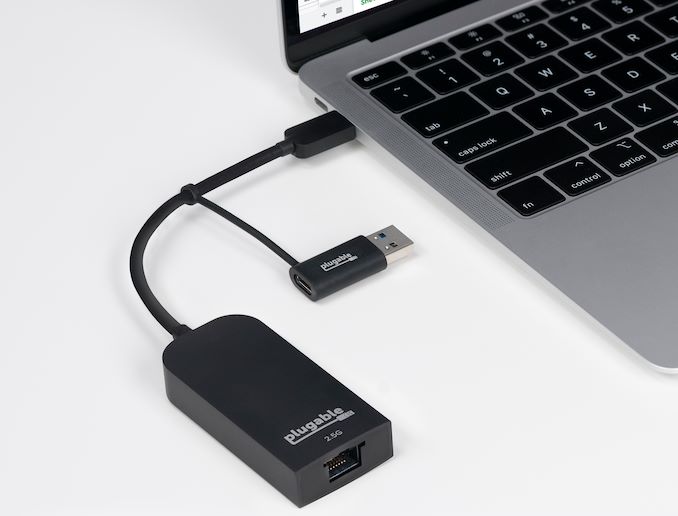


 Quote
Quote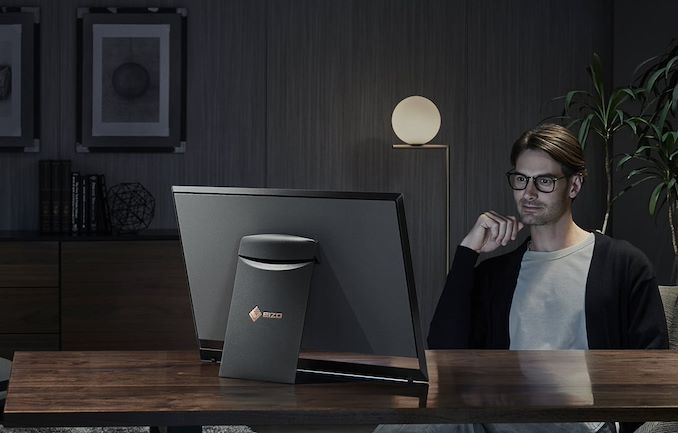
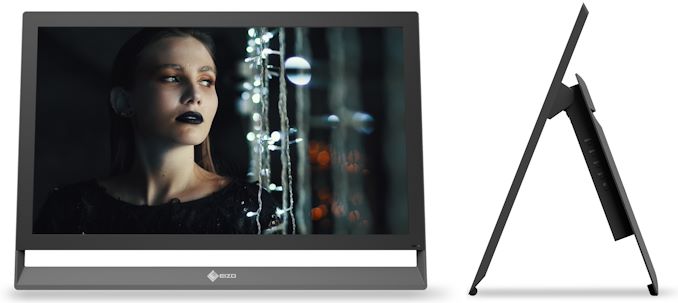
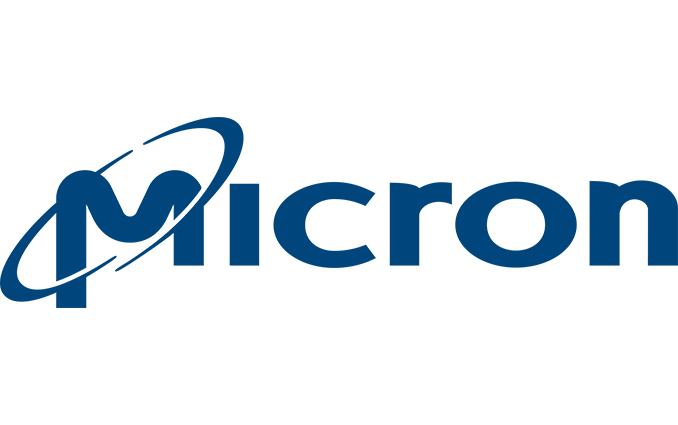
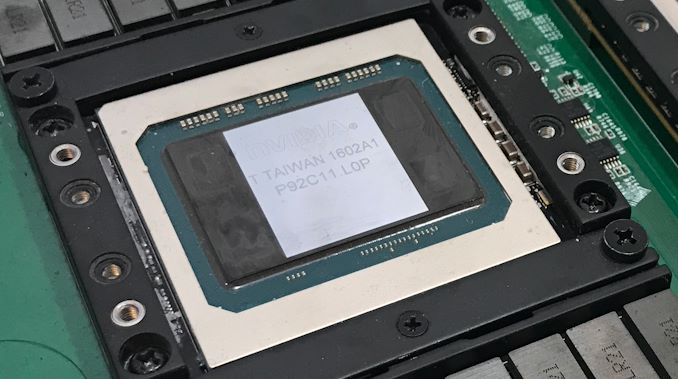



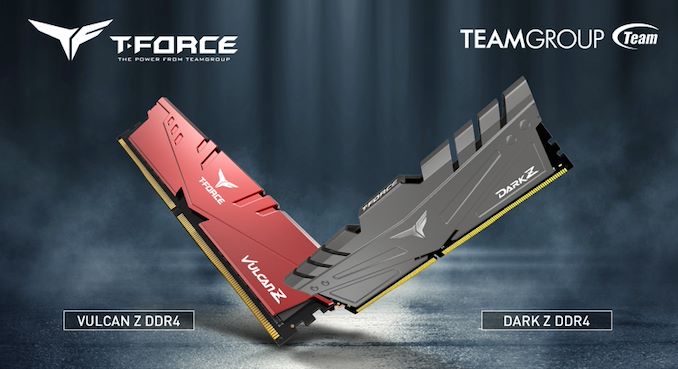
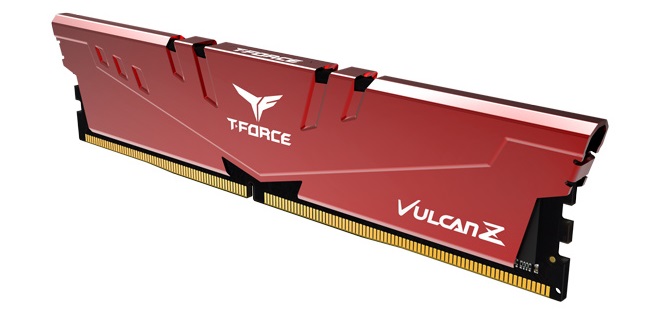
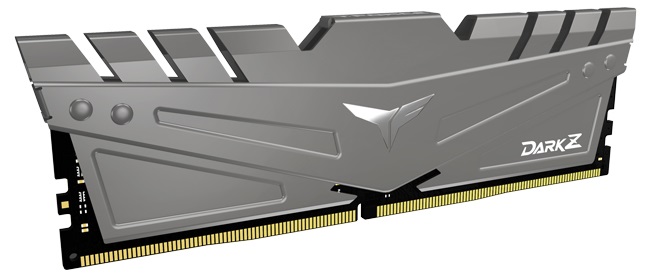
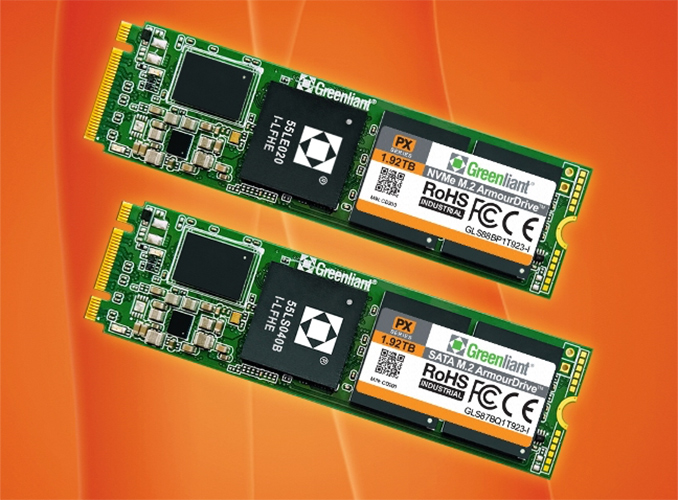
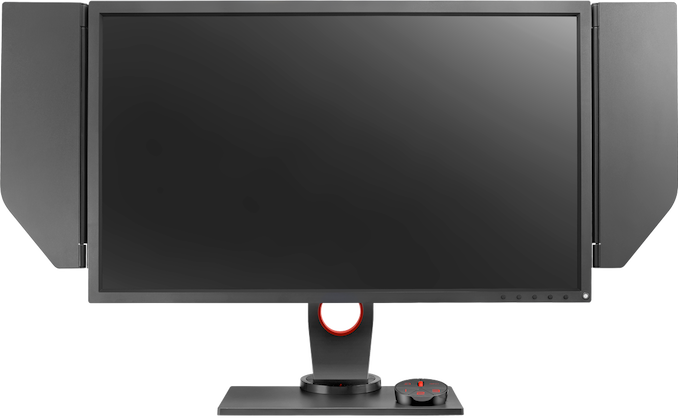
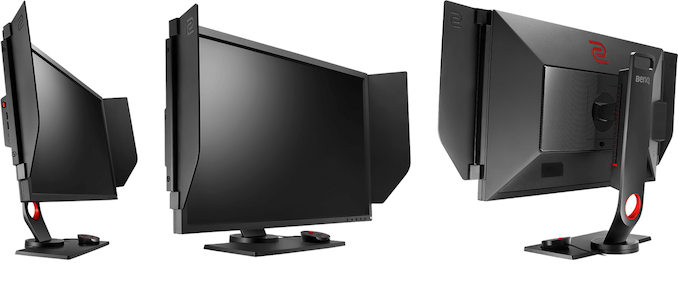
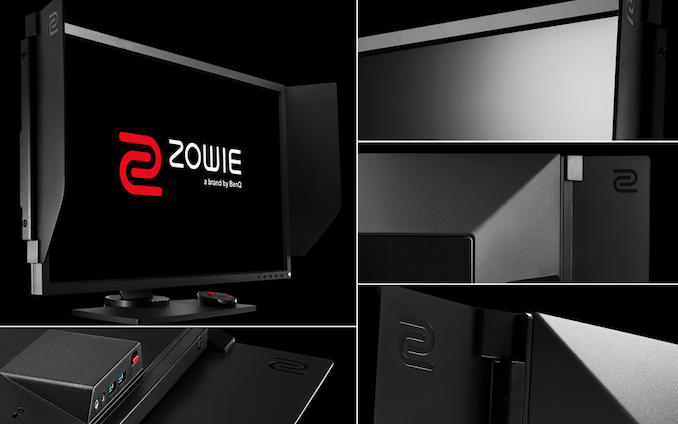
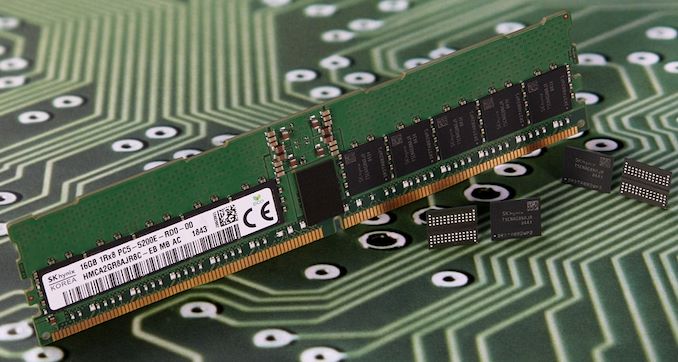
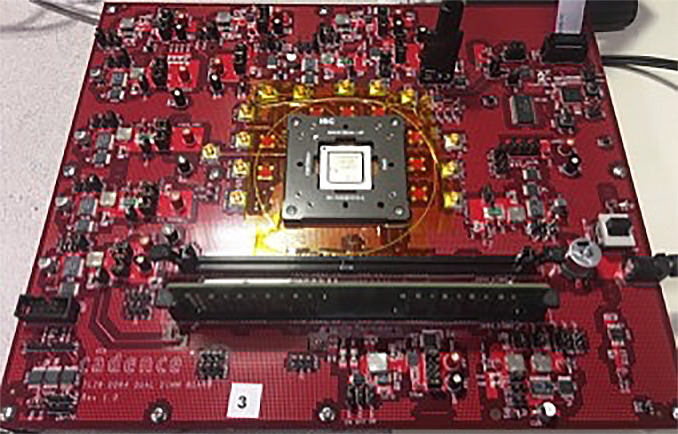
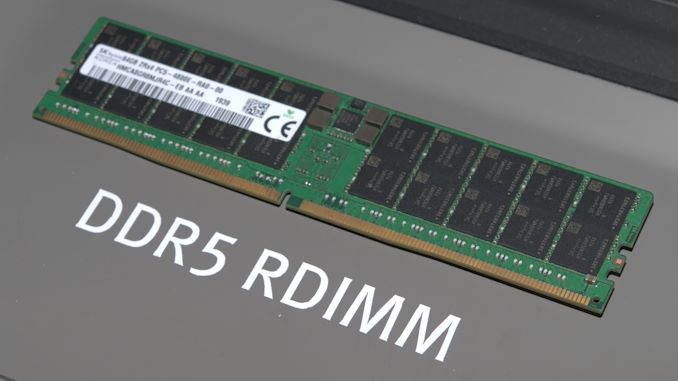

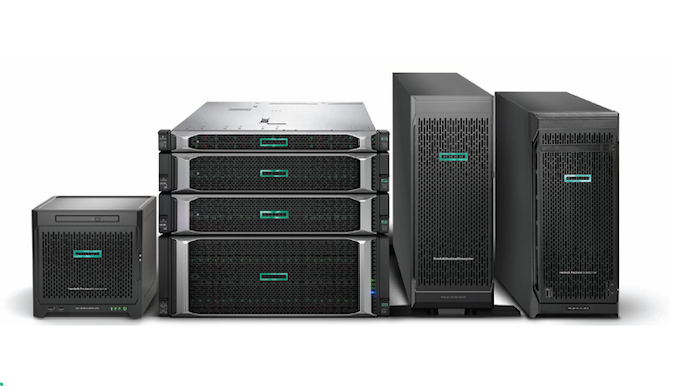
















Bookmarks